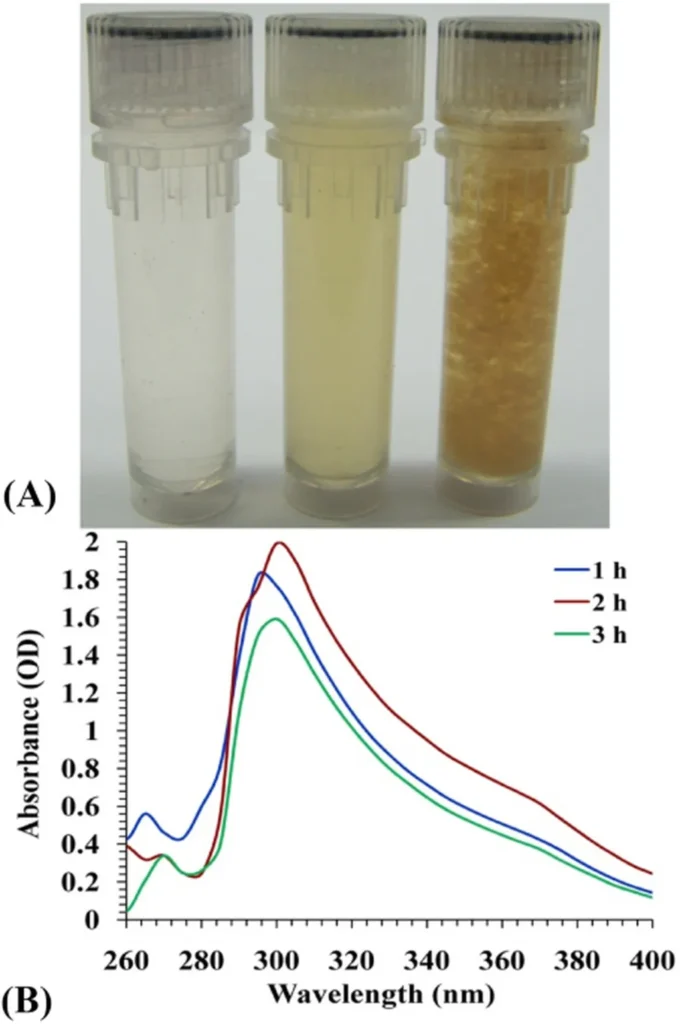In the ever-evolving landscape of nanotechnology, researchers have long grappled with the challenge of synthesizing chitosan nanoparticles (CNPs) in a manner that is both simple and cost-effective. A recent study published in *Discover Nano* offers a promising solution, presenting a novel protocol that could revolutionize the way CNPs are produced and utilized, particularly in the agriculture sector.
Chitosan, a derivative of chitin, is renowned for its biocompatibility, biodegradability, and antimicrobial properties. However, the synthesis of CNPs has traditionally been a complex and time-consuming process, often involving overnight stirring, costly filtration, and labor-intensive lyophilization. This has posed a significant barrier to the widespread adoption of CNPs in various applications, including sustainable agriculture.
The study, led by A. B. Anju from the Department of Agricultural Microbiology at Kerala Agricultural University, introduces a groundbreaking protocol that simplifies the synthesis of CNPs using ionic gelation. The method involves the use of low molecular weight chitosan (0.1%) stabilized with Tween 80 in a 1% acetic acid solution, crosslinked with sodium tripolyphosphate (STPP) in a 3:1 volume ratio. This innovative approach eliminates the need for complex and expensive lyophilization, as the nanoparticles can be efficiently separated using simple centrifugation.
“The simplicity and cost-effectiveness of our protocol make it highly accessible for researchers and industries alike,” Anju explained. “This could significantly accelerate the development and deployment of CNPs in various fields, including agriculture.”
The synthesized CNPs were thoroughly characterized using a wide range of analytical techniques, including UV–Vis spectroscopy, Dynamic Light Scattering (DLS), Scanning Electron Microscopy (SEM), Fourier Transform Infrared Spectroscopy (FTIR), X-ray Diffraction (XRD), Energy-Dispersive X-ray Analysis (EDAX), Atomic Force Microscopy (AFM), and High-Resolution Transmission Electron Microscopy (HRTEM). The results consistently demonstrated the formation of well-defined, spherical amorphous nanoparticles within the nanometer range, exhibiting a positive surface charge, presence of functional groups, and desirable elemental composition.
The implications of this research for the agriculture sector are profound. CNPs have shown great potential in areas such as antimicrobial coatings, food preservation, and water treatment. Their inherent biocompatibility and functional versatility make them highly promising for sustainable agriculture practices. The simplified synthesis protocol could pave the way for the large-scale production of CNPs, making them more accessible and affordable for agricultural applications.
“This research represents a significant advancement in the field of nanotechnology,” said a spokesperson for the agricultural technology industry. “The simplified synthesis protocol could open up new avenues for the use of CNPs in agriculture, contributing to more sustainable and efficient farming practices.”
As the world continues to seek innovative solutions for sustainable agriculture, the development of simple, cost-effective, and scalable protocols for the synthesis of CNPs is a crucial step forward. The research published in *Discover Nano* by Anju and her team not only addresses a critical unmet need but also sets the stage for future developments in the field, promising to shape the future of agriculture in meaningful ways.

